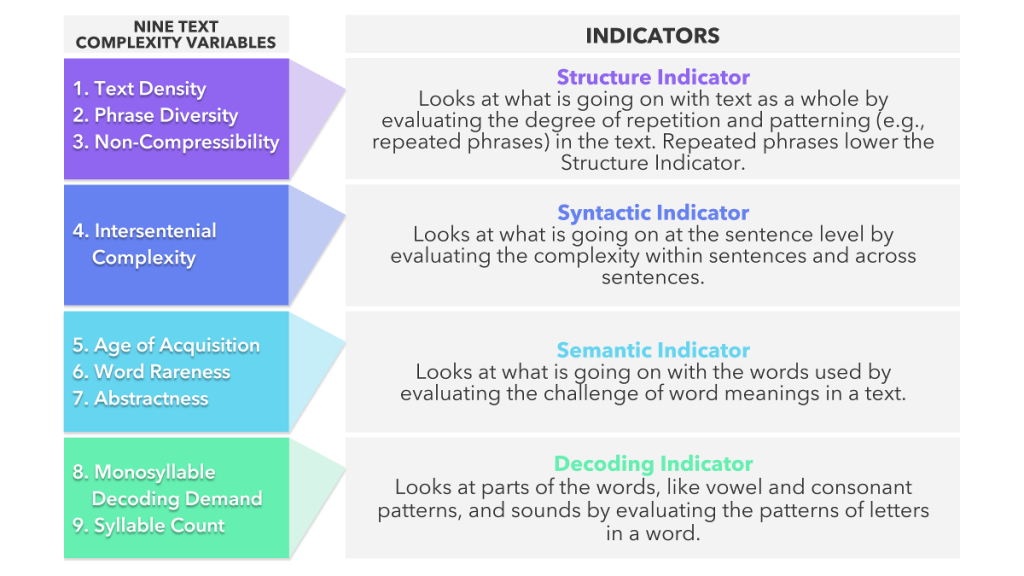Early-Reading Indicators
With the more precise measurement of content used in K–2 classrooms, new information is now offered to help determine where the challenge is coming from in a text. Now, “early-reading indicators” are provided for text with Lexile measures of 650L or below in order to help identify important text features in early-reading materials that could present more or less of a challenge for a reader.
There are four types of early-reading indicators that are now reported from the Lexile Analyzer® to help identify important text features that could present more or less of a challenge in K–2 books. The early-reading indicators are derived from the nine-variable model that the Lexile Analyzer uses to measure text complexity and provided for text that is 650L and below.

Educators can use the early-reading indicators to help identify texts with features that could better support comprehension for certain types of students. For example, a student struggling with phonics could benefit from reading books that have a very low to low Decoding Indicator. Books with a low Decoding Indicator tend to contain more monosyllabic words and words with simple orthographic and sound-symbol relationships, like “cat” and “top.” Books like these would make it more likely that a child succeeds when reading the book aloud. When teaching students that are English Language Learners (ELLs), one may want to consider looking for books with a low Semantic Indicator to help improve comprehension. These type of books contain more familiar, high-frequent and concrete words and could help ELLs better understand the material.
It is important to read a variety of different types of reading materials. Early-reading indicators also help ensure that students are getting this variety in their reading experiences by reading a repertoire of texts that have different types of challenges. Early-reading indicators are accessible on the book detail pages of Find a Book.
Frequently Asked Questions
For more information, see our FAQs on early-reading indicators.
